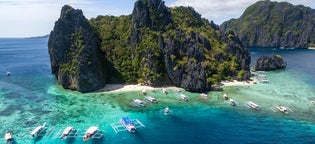Best places in the Philippines
Destinations

Best places in the Philippines
Best places in the Philippines
2,677 results match your search
Refine the results by using the filters
Sort by: Popular

4.6
2,480 reviews
Puerto Princesa Subterranean River National Park, Puerto Princesa, Palawan, Philippines
Puerto Princesa Underground River
Puerto Princesa Underground River Deep in the heart of Palawan Island lies one of the world’s most extraordinary natural wonders—the Puerto Princesa Underground River or the Puerto Princesa Subterranean River National Park. Carved over millennia by flowing water beneath a lush limestone karst la

4.8
689 reviews
Chocolate Hills, Loay Interior Road, Carmen, Bohol, Philippines
Chocolate Hills
Nestled in the heart of Bohol Island, the Chocolate Hills are one of the island’s most iconic natural attractions. This unique landscape of over 1,200 symmetrical mounds, which transform into a rich chocolate hue during the dry season, has long captivated visitors with its surreal beauty and intri

5.0
114,436 reviews
Intramuros, Manila, Metro Manila, Philippines
Intramuros
Intramuros Intramuros, Manila’s historic walled city, is a living museum that showcases centuries of Philippine heritage through its preserved Spanish colonial architecture and cobblestone streets. Recognized as one of the most iconic tourist spots in Manila City, this captivating district offe

4.9
155 reviews
Kayangan Lake, Coron, Palawan, Philippines
Kayangan Lake
Kayangan Lake Kayangan Lake in Palawan, is one of the most popular Coron tourist spots and is included in Coron island-hopping tours that depart from town on a regular basis. It is also one of the cleanest lakes in Asia. How to Get There Getting to Kayangan Lake itself involves quite a long t

Install the Philippines’ biggest travel app
Download the Philippines’ biggest travel marketplace to your phone to manage your entire trip in one place
Scan this QR code with your phone camera and press the link that appears to add the Philippines’ biggest travel marketplace into your pocket. Enter your phone number or email address to receive an SMS or email with the download link.









